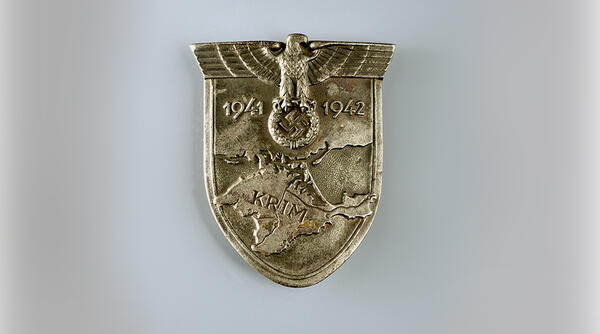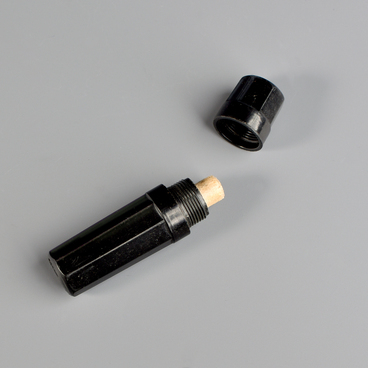The defense of Sevastopol lasted 250 days, from October 30, 1941, to July 4, 1942. The locals, who took part in constructing the fortifications, made weapons and ammunition, and helped the wounded, played an important role in the defense of the city. More than 15 thousand citizens joined the militia. In the defense of Sevastopol, the German troops lost 300 thousand people and the Soviet forces — about 157 thousand. The main forces of the Soviet fleet were located in Sevastopol, consisting of one battleship, five cruisers, 11 destroyers, and 16 submarines, most of which managed to leave for the Caucasus bases in October 1942.
In commemoration of the heroic defense of the Black Sea Fleet main base, the medal ‘For the Defense of Sevastopol’ was established on December 22, 1942, by decree of the Presidium of the Supreme Soviet of the USSR. In contrast to the Soviet award, the German command introduced the Crimea Shield for the soldiers of the Third Reich from the 11th Army of the Wehrmacht, who participated in the capture of the Crimean Peninsula and Sevastopol.
The Crimea Shield was established on July 25, 1942, emphasizing the importance of the capture of the Crimea and the particular severity of the fighting. The award was to be worn on the left sleeve of the uniform above the elbow. But some soldiers wore it on their chests. The Crimea Shield had a cloth backing that preserved the silhouette and protruded beyond the award at the edges. The color of the fabric matched the uniform of the appropriate troops: in the Wehrmacht ground forces, it was green, in the Luftwaffe — blue, in tank units — black.
The shield was made of sheet steel and covered with bronze paint. There were two special shields made of gold. Field marshal Erich von Manstein presented the first award to marshal Ion Antonescu who commanded the Romanian troops during the Crimean operation. Later he received the second special award himself.
The Crimea Shield is displayed in the showcase of the exhibition ‘Remembered Today and Always’ where trophy awards, cold arms, equipment, and everyday items of German soldiers, which were donated to the Kirov Regional Museum of Local History by participants of World War II, are collected.
In commemoration of the heroic defense of the Black Sea Fleet main base, the medal ‘For the Defense of Sevastopol’ was established on December 22, 1942, by decree of the Presidium of the Supreme Soviet of the USSR. In contrast to the Soviet award, the German command introduced the Crimea Shield for the soldiers of the Third Reich from the 11th Army of the Wehrmacht, who participated in the capture of the Crimean Peninsula and Sevastopol.
The Crimea Shield was established on July 25, 1942, emphasizing the importance of the capture of the Crimea and the particular severity of the fighting. The award was to be worn on the left sleeve of the uniform above the elbow. But some soldiers wore it on their chests. The Crimea Shield had a cloth backing that preserved the silhouette and protruded beyond the award at the edges. The color of the fabric matched the uniform of the appropriate troops: in the Wehrmacht ground forces, it was green, in the Luftwaffe — blue, in tank units — black.
The shield was made of sheet steel and covered with bronze paint. There were two special shields made of gold. Field marshal Erich von Manstein presented the first award to marshal Ion Antonescu who commanded the Romanian troops during the Crimean operation. Later he received the second special award himself.
The Crimea Shield is displayed in the showcase of the exhibition ‘Remembered Today and Always’ where trophy awards, cold arms, equipment, and everyday items of German soldiers, which were donated to the Kirov Regional Museum of Local History by participants of World War II, are collected.



